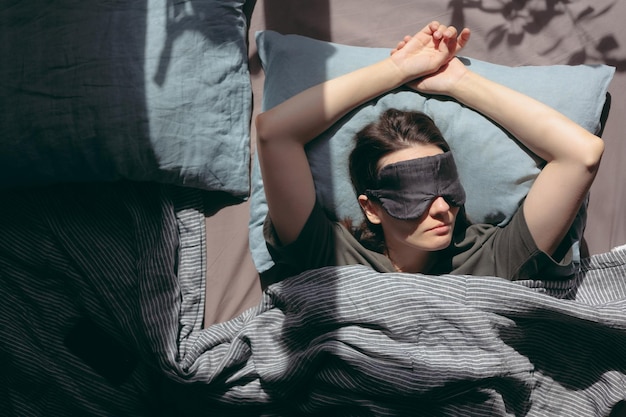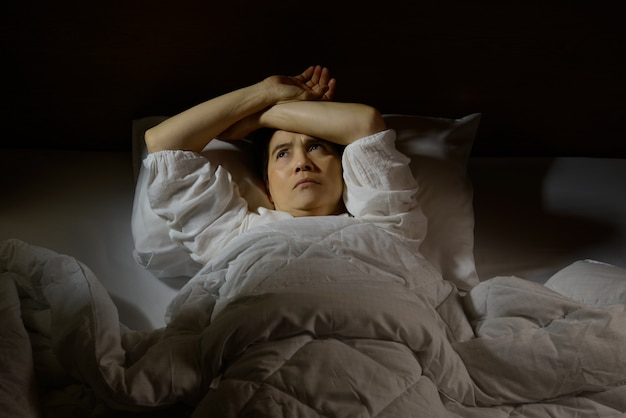REM sleep is one of the five stages of the sleep cycle. It is characterized by rapid movement of the eyes, vivid dreaming, and increased brain activity. This stage is essential for cognitive functions such as memory consolidation, learning, and emotional regulation. During a typical night’s sleep, REM occurs multiple times and constitutes about 20-25% of total sleep time.
Accurate Narcolepsy Diagnosis Through Specialized Testing
At Sonno Sleep Center, we specialize in identifying the unique sleep patterns associated with narcolepsy, including the early onset of REM sleep and sleep fragmentation. Our advanced diagnostic tools, including overnight polysomnography and the Multiple Sleep Latency Test (MSLT), are essential for accurately diagnosing narcolepsy. These tests allow our sleep specialists to observe abnormal REM activity and daytime sleep tendencies that often go undetected elsewhere. With precise data, we can develop targeted treatment plans to improve your sleep quality and manage symptoms like excessive daytime sleepiness and cataplexy.
Key Characteristics of REM Sleep
REM sleep is marked by several distinct features, which include rapid eye movement, muscle atonia, and dream activity. The rapid eye movement occurs as the eyes move quickly in different directions, a phenomenon that is believed to be related to dream activity. Muscle atonia, or the temporary paralysis of most muscles, prevents the sleeper from acting out their dreams, ensuring safety during sleep. This stage is also when the brain’s activity is most similar to waking life, making it a critical period for cognitive processing.

Cognitive Functions of REM Sleep
REM sleep plays a vital role in various cognitive functions. It is during this stage that the brain consolidates information gathered throughout the day, aiding in memory and learning. Emotional regulation is another critical aspect of REM sleep, as it helps process emotional experiences, reducing the emotional charge of memories and contributing to mental health. The absence of adequate REM sleep can lead to memory deficits and emotional instability.
Variability of REM Sleep Across Lifespan
The proportion of REM sleep changes as a person ages. Infants spend about 50% of their sleep time in REM, which decreases to 20-25% by adulthood. This reduction is thought to reflect the changing cognitive and developmental needs at different life stages. Understanding this variability is essential for recognizing how narcolepsy can disrupt normal sleep patterns across different ages.
Customized Treatment Plans for REM Sleep Disorders
Narcolepsy doesn’t look the same for every patient, and that’s why Sonno Sleep Center focuses on individualized treatment strategies. Whether you’re dealing with REM Sleep Behavior Disorder, vivid dreaming, or sleep paralysis, our board-certified specialists will guide you through a personalized care plan. From medication management to behavioral therapy and lifestyle adjustments, we provide long-term support aimed at regulating REM cycles and restoring restful sleep. Our approach integrates the latest research and evidence-based practices to help patients regain control over their daily lives.
The Role of REM Sleep in Narcolepsy
In people with narcolepsy, REM sleep can occur at unusual times. For instance, they might enter REM sleep shortly after falling asleep, bypassing the initial non-REM stages. This irregularity can lead to symptoms such as excessive daytime sleepiness, cataplexy (sudden muscle weakness), and sleep paralysis.

Early Onset of REM Sleep
One of the most distinct features of narcolepsy is the early onset of REM sleep. Unlike typical sleep cycles where REM sleep occurs about 90 minutes after falling asleep, individuals with narcolepsy can enter REM sleep almost immediately. This premature entry disrupts the natural progression of the sleep stages, leading to fragmented and unrefreshing sleep.
Sleep Paralysis and Narcolepsy
Sleep paralysis is a frightening symptom commonly associated with narcolepsy, occurring during the transitions between wakefulness and sleep. It happens when the muscle atonia of REM sleep occurs while the person is awake, leading to a temporary inability to move or speak. This experience can be accompanied by vivid hallucinations, making it a distressing event for those affected.
Vivid Dreaming in Narcolepsy
People with narcolepsy often report experiencing vivid and sometimes disturbing dreams. These dreams can be so intense that they blur the lines between reality and sleep, leading to confusion and anxiety. The vivid nature of dreams in narcolepsy is linked to the frequent and abrupt transitions into REM sleep.
Narcolepsy and REM Sleep Behavior Disorder
REM Sleep Behavior Disorder (RBD) is a condition where individuals physically act out their dreams during REM sleep. This can include movements such as talking, yelling, or even sleepwalking. For those with narcolepsy, RBD can be particularly challenging, as it disrupts the restorative nature of sleep and can lead to injuries.
Causes and Risk Factors of RBD in Narcolepsy
RBD in narcolepsy may be influenced by genetic factors, the presence of other sleep disorders, and certain medications. The condition is more prevalent in males and can worsen with age. Understanding these risk factors can help in developing strategies to manage RBD effectively.
Impact of RBD on Sleep Quality
The physical activity associated with RBD can significantly disrupt sleep quality, leading to increased sleep fragmentation. This disruption prevents the brain from completing its essential restorative functions during REM sleep. Consequently, individuals may experience increased fatigue and cognitive impairments during the day.
Safety Concerns and Management of RBD
Safety is a significant concern for individuals with RBD, as acting out dreams can result in injury to themselves or their bed partners. Managing RBD involves creating a safe sleep environment, such as removing sharp objects and securing windows. Medications like melatonin or clonazepam may be prescribed to reduce dream enactment behaviors.
How Narcolepsy Affects REM Sleep
Excessive Daytime Sleepiness
One of the hallmark symptoms of narcolepsy is excessive daytime sleepiness, which is closely linked to REM sleep abnormalities. Patients often feel an overwhelming urge to sleep during the day, even after a full night’s sleep. This is due to the brain’s mismanagement of the sleep-wake cycle, causing it to enter REM sleep inappropriately.
Cataplexy and REM Sleep
Cataplexy is a sudden loss of muscle tone triggered by strong emotions, such as laughter or surprise. This symptom is unique to narcolepsy and is believed to be related to REM sleep intruding into wakefulness. During REM sleep, the body naturally experiences muscle atonia (a state of paralysis), which prevents us from acting out dreams. In narcolepsy, this paralysis can occur while awake, leading to cataplexy.
Sleep Fragmentation and REM Sleep
Individuals with narcolepsy often experience sleep fragmentation, characterized by frequent awakenings during the night. This fragmentation can lead to a reduction in the quality and quantity of REM sleep, exacerbating symptoms like daytime sleepiness and cataplexy. Addressing sleep fragmentation is crucial for improving overall sleep quality and managing narcolepsy.
Diagnosing Narcolepsy
If you suspect you have narcolepsy, a sleep specialist can conduct tests to diagnose the condition. Common tests include:
- Polysomnogram (PSG): An overnight sleep study that records brain waves, heart rate, and other vital signs to monitor sleep stages.
- Multiple Sleep Latency Test (MSLT): Measures how quickly you fall asleep in a quiet environment during the day and how often you enter REM sleep.

The Importance of Accurate Diagnosis
Accurate diagnosis of narcolepsy is essential for effective treatment and management. Misdiagnosis can lead to inappropriate treatments that may worsen symptoms. A comprehensive evaluation by a sleep specialist, including detailed patient history and sleep studies, is crucial for an accurate diagnosis.
Understanding Polysomnography
Polysomnography is a critical diagnostic tool that provides detailed insights into sleep architecture and identifies abnormalities in REM sleep. This test helps differentiate narcolepsy from other sleep disorders, such as sleep apnea or insomnia. It involves monitoring various physiological parameters overnight, offering a comprehensive view of sleep patterns.
Role of the MSLT in Diagnosis
The Multiple Sleep Latency Test (MSLT) is often conducted the day after a polysomnogram. It assesses the tendency to fall asleep in a quiet environment and the speed of entering REM sleep. The MSLT is particularly useful in confirming narcolepsy diagnosis, as patients typically enter REM sleep quickly during daytime naps.
For more in-depth information on narcolepsy, including symptoms, causes, and treatment options, the U.S. National Library of Medicine’s MedlinePlus offers a trusted and easy-to-understand resource.
👉 Click here to visit the MedlinePlus narcolepsy page and learn more.
Managing Narcolepsy and REM Sleep Disorders
Lifestyle Changes
Adopting certain lifestyle changes can help manage narcolepsy symptoms and improve sleep quality:
- Regular Sleep Schedule: Go to bed and wake up at the same time every day, including weekends.
- Scheduled Naps: Take short, scheduled naps during the day to combat excessive sleepiness.
- Healthy Diet: Maintain a balanced diet to support overall health.
- Exercise: Regular physical activity can improve sleep quality and energy levels.
Medications
Several medications can help manage narcolepsy symptoms by influencing REM sleep:
- Stimulants: Help reduce excessive daytime sleepiness.
- Antidepressants: Can help control cataplexy and REM sleep behavior disorder.
- Sodium Oxybate: Helps improve nighttime sleep and reduce cataplexy episodes.
Cognitive Behavioral Therapy (CBT)
CBT can be an effective tool for managing the psychological aspects of narcolepsy, such as anxiety and depression, which can exacerbate sleep issues. It focuses on changing negative thought patterns and behaviors that affect sleep.
Importance of a Consistent Sleep Environment
Creating a consistent and calming sleep environment is vital for managing narcolepsy. This includes maintaining a comfortable bedroom temperature, reducing noise and light, and using a supportive mattress and pillows. A conducive sleep environment can enhance sleep quality and reduce the frequency of sleep disruptions.
Nutritional Considerations for Narcolepsy
Diet plays a significant role in managing narcolepsy symptoms. Consuming a balanced diet rich in nutrients can support overall health and energy levels. Some patients find that avoiding heavy meals before bedtime and limiting caffeine and sugar intake can help improve sleep quality.
Role of Support Groups and Counseling
Joining support groups and seeking counseling can provide emotional support and practical advice for living with narcolepsy. Sharing experiences with others who understand the condition can reduce feelings of isolation and offer new coping strategies. Counseling can address the emotional challenges of living with a chronic sleep disorder, fostering a more positive outlook.
Conclusion
Understanding the intricate relationship between REM sleep and narcolepsy is crucial for managing this sleep disorder effectively. By recognizing the symptoms, seeking appropriate medical care, and adopting lifestyle changes, individuals with narcolepsy can lead fulfilling lives. Remember to consult with a healthcare professional to tailor a treatment plan that meets your specific needs.
Managing narcolepsy can be challenging, but with the right information and resources, you can take control of your condition and improve your overall well-being. Stay informed, stay proactive, and always reach out for support when needed. Your journey towards better sleep and a healthier life starts with understanding your unique needs.
